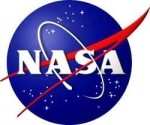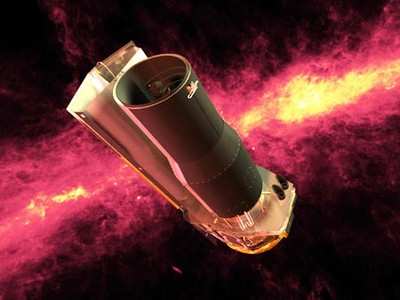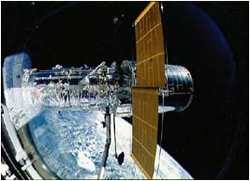Hubble, Spitzer Space Platforms Add To The Understanding Of The
Find
 Astronomers have uncovered one of
the youngest galaxies in the distant universe, with stars that
formed 13.5 billion years ago, a mere 200 million years after the
big bang. The finding addresses questions about when the first
galaxies arose, and how the early universe evolved.
Astronomers have uncovered one of
the youngest galaxies in the distant universe, with stars that
formed 13.5 billion years ago, a mere 200 million years after the
big bang. The finding addresses questions about when the first
galaxies arose, and how the early universe evolved.
NASA's Hubble Space Telescope was the first to spot the newfound
galaxy. Detailed observations from the W.M. Keck Observatory on
Mauna Kea in Hawaii revealed the observed light dates to when the
universe was only 950 million years old; the universe formed about
13.7 billion years ago. Infrared data from both Hubble and NASA's
Spitzer Space Telescope revealed the galaxy's stars are quite
mature, having formed when the universe was just a toddler at 200
million years old.
"This challenges theories of how soon galaxies formed in the
first years of the universe," said Johan Richard of the Centre de
Recherche Astronomique de Lyon, Universite Lyon 1 in France, lead
author of a new study accepted for publication in the Monthly
Notices of the Royal Astronomical Society. "It could even help
solve the mystery of how the hydrogen fog that filled the early
universe was cleared."

Spitzer Telescope NASA Image
This galaxy is not the most distant ever observed, but it is one
of the youngest to be observed with such clarity. Normally,
galaxies like this one are extremely faint and difficult to study,
but, in this case, nature has provided the astronomers with a
cosmic magnifying glass. The galaxy's image is being magnified by
the gravity of a massive cluster of galaxies parked in front of it,
making it appear 11 times brighter. This phenomenon is called
gravitational lensing.
"Without this big lens in space, we could not study galaxies
this faint with currently available observing facilities," said
co-author Eiichi Egami of the University of Arizona in Tucson.
"Thanks to nature, we have this great opportunity to see our
universe as it was eons ago."
The findings may help explain how the early universe became
"reionized." At some point in our universe's early history, it
transitioned from the so-called dark ages to a period of light, as
the first stars and galaxies began to ignite. This starlight
ionized neutral hydrogen atoms floating around in space, giving
them a charge. Ultraviolet light could then travel unimpeded
through what had been an obscuring fog.
The discovery of a galaxy possessing stars that formed only 200
million years after the big bang helps astronomers probe this
cosmic reionization epoch. When this galaxy was developing, its
hot, young stars would have ionized vast amounts of the neutral
hydrogen gas in intergalactic space. A population of similar
galaxies probably also contributed to this reionization, but they
are too faint to see without the magnifying effects of
gravitational lensing.

Hubble Telescope NASA Image
NASA's James Webb Space Telescope (JWST), scheduled to launch
later this decade, will be able to see these faint galaxies lacking
magnification. A successor to Hubble and Spitzer, JWST will see
infrared light from the missing population of early galaxies. As a
result, the mission will reveal some of our universe's best-kept
secrets.
"Seeing a galaxy as it appeared near the beginning of the
universe is an awe-inspiring feat enabled by innovative technology
and the fortuitous effect of gravitational lensing," said Jon
Morse, NASA's Astrophysics Division director at the agency's
headquarters in Washington. "Observations like this open a window
across space and time, but more importantly, they inspire future
work to one day peer at the stars that lit up the universe
following the big bang."
 Aero-News: Quote of the Day (11.17.25)
Aero-News: Quote of the Day (11.17.25) ANN's Daily Aero-Term (11.17.25): NonDirectional Beacon
ANN's Daily Aero-Term (11.17.25): NonDirectional Beacon NTSB Final Report: Fred L Wellman CH 750 Cruzer
NTSB Final Report: Fred L Wellman CH 750 Cruzer ANN's Daily Aero-Linx (11.17.25)
ANN's Daily Aero-Linx (11.17.25) Airborne-NextGen 11.11.25: Archer Buys Hawthorne, Joby Conforms, Stranded Astros
Airborne-NextGen 11.11.25: Archer Buys Hawthorne, Joby Conforms, Stranded Astros





